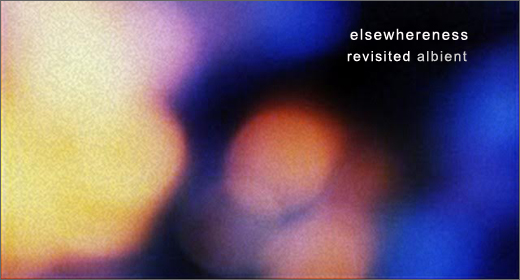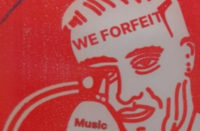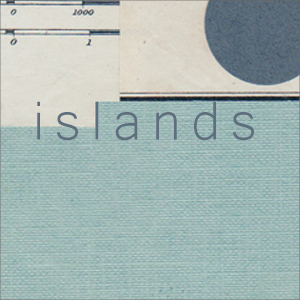Elsewhereness revisited is an occasional feature documenting the drift at the margins: ambient gasbagging, ’tube-d, ’cloud-ed, and ’camp-ed up, complete with companion mix, Elsewhereness revisited #8.
In a month that sees the 20th birthday of Music Has the Right to Children—marked by a Simon Reynolds-penned tribute (Why Boards of Canada’s MHtRtC Is the Greatest Psychedelic Album of the ’90s, Pitchfork), a nice conceit comes cut from similar cloth of past-inside-the-present/lost futures: The National Pool‘s Relaxation Tape for Solo Space Travel (Infraction) harks back to when the USSR was an industrial giant—to moon stations, atomic icebreakers, and construction of the world’s largest nuclear power plants, like a half-speed monochrome newsreel of the successes and celebrations of the Russian people; a vivid portrait of a moment frozen in an era, from release format (even the digital d/l comes with tape hiss!), retro-futurist cover, and liner notes about past Russian space travel successes, there’s an authentic analog retro look and feel, though the pieces are turned out more like contemporary electronics; more than ambient tropes of space samples, radio transmissions and Russian distress signals, there’s a wider ambit of sounds, from melancholy pianistics (“Net Rain”) to Gas-eous emissions (“Brick Cloud – Area 2”). ‘We equip our Cosmonaut comrades with these sounds. They intent for solo space travels, mind sharpening and concentration.’ (Back to Boards, if you’re looking for new ones to tread, walk on over to Dalham‘s Janus (Public House), a late-2017 sneak-out, which, in case you missed it, got igloo-‘viewed here.)
Type, Important, Home Normal, 12K, Miasmah, Entr’acte, Dekorder, Consouling Sounds, Experimedia, Staalplaat: just some of the labels that have hosted Machinefabriek since 2004. And Belgian tape buffs, Dauw, put out “Dwaal” and “Wold” in early 2016. Blink and it went, so Moving Furniture have re-issued Dwaal / Wold on cd/digital, adding takes from Benoît Pioulard (Sonnet an avowed influence) and Nicola Ratti (another). “Dwaal” offsets unkempt and serene, tumult and calm, with orchestral washes amid a stream of radio static and noise, while “Wold” lets sparse piano spread over a bed of hiss, serenity largely intact, both seeking to create an auditory space rather than craft a composition: Ratti pares back “Dwaal,” rhythmizing it with synth sputters and bloops, while Pioulard makes mesmeric with the organ and guitar of “Wold.” Elsewhere on Dauw, BP is among those engaged by Kevin Imbrechts aka Illuminine to ‘reconstellate’ tracks from his’s #2 for #2 Reworks.
https://youtu.be/dG_PBmtjkPM
Another #2 reworker, Brussels-based Brit Will Samson, has his own Dauw entry, A Baleia, a mini-album of tape-manipulated ambience, apparently inspired by a spell in a soundproof flotation tank. Wrought with vintage tape machines and tube amps, the worn tapes’ decay manipulations become generative, wordless choir loops shaped into spectral echoes, processed electric guitars into water-like swells, incl. like-mind colluders (Bonjour, Benoît!). And Saudade from modular/hardware buff, r beny, electronic ambient drift hymning ‘forest drives, coastal cliffs, lost loves, aged memories like light gleaming through the trees,’ closes these Dauws.
Raking over some old Leaaves while we look at his newer atmospheric distractions somewhere between comfort and disquiet. The languid lulls of Panacea for Lightweights (Katuktu Collective) from Nate Wagner, lure to come on in; the water’s not totally fine, though—there’s something in it: ‘We become more and more entangled in this welcoming musical latticework, refusing to look away and break the spell,’ (The Tape Deck). The ER-familiar ‘disintegration fruitloops’ man’s Novella drew us in a while ago on Audio.Visuals.Atmosphere., a pretext to bring in Mt Accord, whose A.V.A. split, No Rush, is blurbed with that label’s patented mix of pretentiousness and ellipsis: ‘A valley of myriad mirrors that catch our subconsciousness, liberating the limits of man’s imagination,’ to say nothing of ‘Calming internal duality that collects a meditative and arduous survey, both temporal and celestial. Solemn and discreet at its surface, for it is committed to providing a vision of the summit. A vacuum, closing in on its final statement.’ Kudos for the epic “20142017.” Quick trip back to Katuktu for Geborgenheit, Dominic Razlaff‘s lonely ruminations as DR, previously spotted Hovering on Shimmering Moods in ER#7. And if you go down to the shimmering moods today, have a wander in Rime Trails‘ Sacred Groves.
Andrew Tasselmyer moves from Resonant Moments to Vantage Points (Shimmering Moods), ‘a set of half forgotten dreams and hazy childhood memories captured on tape’ referencing ‘the personal connection we establish with certain physical locations’ and how ‘everyday locales become a part of an inner geography of sorts.’ Bass, tape manipulation, and disintegrative piano are dissolved in field recordings to create sepia-tone drones that transport to the very essence of memory, less seen than felt in abstraction evoked in the moment. And new project, Gray Acres, with brother Michael (of Hotel Neon), debuts for sound in silence with a s-t album seeking ‘beauty and stillness.’ Similar means—effected guitar swells, plied piano and field recordings—with a more sprawling habit. The same label label hosts Brighton’s A Lily, whose catalog reveals 3 EPs (I Dress my Ankles…, Lupa), 2 albums (Wake:Sleep, Thunder Ate The Iron Tree), and a single (Shadow & Me Makes Three). Ten Drones On Cassette was first self-released as a set of ten minimal ambient drone tracks, each with the name and stamp of a specific person, on a different cassette ltd. to 1. This is edits of all ten, while the ltd. ed. has a d/l code for full (37-50 min.) versions. James Vella’s (of yndi halda) treated and processed instruments produce, you guessed it, ‘dreamy soundscapes and hypnotic textures.’ Each individual loop-scape from “Hildur” to “Didem” resounds as somehow distinct, though subtly different.
Doleful ostinati encased in FX-heavy atmo-fug, blousily billed ‘deeply emotive and epic, like a symphony recording […] rescued from attic entombment after half a century.’ Yep, Rafa’s back. Anton Irisarri, that is—of Room40 and Umor Rex, Ghostly and Morr, fame, here on Geographic North for Midnight Colours. Conceived as a sort of OST to the Doomsday Clock (the one symbolically projecting a man-made global catastrophe), recorded in 2017 when it was set at 2½ minutes-to-midnight—second-closest since its 1947 start (now just 2). Heavily degraded tape played through a wonky Otari 8-track tape machine for that particular timbral quality ‘like when you watch old news reels from the 1950s […] about the H-bomb, and how we are all doomed’ (RAI). “The Clock” and “Falling Curtain” deal in elegiac dirge, humanity with pessimism; “Oh Paris, We Are Fucked” sulks behind a veil of tears, while “Circuits” twinkles hopefully; “Every Scene Fades” unfurls a symphony of eerie to remote rhythmic heaves, before the maudlin optimism of “Two and a Half Minutes,” then “Drifting” and “A Ruptured Tranquility” bring closure, perfused with a melancholy of memory and end-of-days revenance. On Sirimiri (Umor Rex), Irisarri ‘seeks to blend subjective time with the listening experience. A sort of loop and repetition, sub-sequence-based sound. Following Eno, nothing happens in the same way twice, perception is constantly shifting, nothing stays in one place for long.’ The desolation and despair of The Shameless Years (Umor Rex, 2017) is more hinted at, impressionistic, less rhetorical, the former’s active tragedy replaced by a more passive observing eye.
No current footage for fossil aerosol mining project’s latest, but the above may stand for any of their sets of ‘songs of enhanced decay and faked resurrection.’ Helen Scarsdale Agency here funds the cryptic Midwest ensemble’s habit of ‘post-industrial research, surrealist collage, refined minimalism, caustic electro-acoustics, sublimated dream-pop, obfuscated field recordings, recombinant noise, existential vacancy, and then some.’ Contextualizing apocrypha for this latest exquisite corpses of exhumed tapes and mouldering 35mm film stock: august 53rd ‘might be considered a prequel to the day 1982 contaminated 1971, featuring the damaged remains of certain pop culture pleasantries in a less decomposed state than found on the previous vinyl release. august 53rd, a month extended to accommodate a changing climate, predates the day 1982 contaminated 1971.’ Such fictive conceits lend suggestive context to these found sound reclamations: elliptical arcs and queasy spirals, pitch-shifted rumble and crumble, mouldering artefacts in shifting syntax; a dialog over decayed decades and memorials for decoding. These ‘enigmas of distressed sound collages’ will thrill seekers after plunderphonic postindustrial-ectricity from :zoviet*france: to philip jeck.
https://youtu.be/6Zqm6Iz9T64
Constellation Tatsu’s Winter batch‘s NY message is in with the new—Rose’s Transference, memorygarden禅’s districtアトランティス—and… in with the old—Hakobune‘s Parhelion and Celer + Forest Management’s Landmarks! Wherein Will Long and John Daniel re-imagine The Mosquito Coast (Paul Theroux book/Peter Weir film), nostalgic for times ‘without the defined predictions about the life cycles of mass culture based on our limited understanding of current events.’ Setting out on “7° 10° 77° 83°” in sonic fog with glassine edges, “The First Steps onto Their Soil” rattling with percussive portent and bird chirp, “Hotel Mona Lisa” teeming with drone-bustle, “Indistinguishable from Magic” floating in space, “Rights of the End or a Machine”—recursion, recursion, micro-variation. A different drum is marched to by Rose on Transference, his Ambient House, New Age and organic lo-fi blend evolving and degenerating—for which see tones taken to the limit in degraded display on “9 Circles,” the ineffable intensity running through “Eros Is Burning,” “Seasalt”‘s off-kilter House tropes, aloof from default doof-doof, and “Ice on the Sheets” brooding in minimalist murk.
Sonic worlds away, memorygarden禅’s districtアトランティス is something of a nostalgic neo-loungey throwback. “聞こえたエコー” has complementary instrumentation built round a steady rhythm base; the loop lull of “コイgarden” gives pause, then “sun輝く街のスカイラインの下に沈むmoon” deploys spatial variation and thematic cadence. Perhaps seeking fresh energy for tired sounds, it struggles to transcend blithe New Age blandishments. To Parhelion, on which Hakobune continues his dream-state ethnography via layered and processed axescapes; meditative, with long drawn-out structures—minimal, yet wholesome, “Part I” and “II” are shaded light and dark, respectively, the former forward in its positivity, the latter more wistful and reflective, their layers in a state of constant exchange, neither beginning nor ending. Hakobune… and on and on…
We need to talk about Kievian! Kiev’s burgeoning Hidden Vibes that is, which hosts Hakobune for ‘a journey to the stars that has no beginning and no end.’ His latest celestial tract, Betelgeuse, is a 42-minute piece whose infinite guitar layers feel chronostatic; like light-emitting diodes glistening with a dim memory of dead stars. It’s a follow-up for the Kiev label to Orient, where there’s no trouble for Olan Mill man, Alex Smalley, especially as he’s all over, rash-like, with his Pausal and Ilm also figuring in a strong line-up on Dronarivm‘s recent New Year charity comp (for service dogs), Illuminations II, including Elsewhereness faves, Maps & Diagrams, New Rome, Dronarivm-Meister Pleq with (hello, again) Hakobune, and Chihei Hatakeyama. Stop Press: there’s no stopping Hakobune, his Obelisk just released by Polar Seas.
Lost and found: Paul Schütze—sound-and-visionary active 30-plus years in a dozen-plus countries and 30-plus albums, incl. collabs with Bill Laswell, Robert Hampson, Jah Wobble, Raoul Björkenheim, Clive Bell, Max Eastley and David Toop. A check for musical pulse in 2016 would lead only to an online sensory archive, Dressing The Air, with an olfactory update: he’d launched his own fragrance house. Out of the blue, The Sky Torn Apart, Schütze, sniffed out by Glacial Movements comes with his first hi-viz work in years: ‘a reflection on the uncanny parallels found in our anthropogenic environmental transformation and the Nordic myths of Ragnarök in which the earth is subsumed by water as a consequence of divine conflict. […] the world emerges from the waters reborn and purged.’ And Nordic mythologist, Northaunt, is another glacial mover, his ‘atmospheric, melancholic ambient mixing environmental recordings and minimalist harmonic and remote melodic elements, treated nature sounds and samples; field recording from nature, soundscapes and ambient’ inspired by ‘books about earth’s history, iceages and the forces that formed the landscapes we have today’ On Istid III (= ‘Ice age’ [Norweg.]) Hærleif Langås resumes where Istid I–II (Cyclic Law, 2015) left off, proposing a pre-human world in ‘a reaction to our modern lifes, our world and how it sometimes seem confusing, stressful and noisy.’ Classically glacial movements.
To Whitelabrecs for Orthodox Tales, Andrew Sherwell‘s trek through tape loops, Korg Volca keys, samples, FX, and field recordings, fuelled by Eastern European chorals, and soundtracks (Svarte Greiner, Caretaker and Xela too). It seeks to re-enact tales of grandad Sherwell, inter-war traveller through the turmoil of the Balkans, Central Europe, and Russia. Sherwell jr. recalls being transported by the meanders of Sherwell snr.’s racontage of his adventures evoked by the archaeology of decay, echoes and dust in these occluded tape loops and smudged field recordings; a neo-hauntological pursuit of personal memorials as conduit for transportive transfer. Meanwhile, Devonian James Osland, forsakes Elm, Shimmering Moods, Green Field, and Audio Gourmet for the Lab to further probe those ‘relationships between sound, memory and place.’ Gone For A While came after homecoming from a period abroad to be assailed with an updrift of barely processed memories—loss of his father post-extended dementia watch over his grandfather prompting reflection on themes of memory, loss and decay), here processed via instruments slathered with far-flung field captures. Last Lab report: a re-issue of Almost There a s-r from Malta’s Robert Farrugia, whose ‘methods of productivity in his music result in a certain set of distinct sounds, creating a rather unparticular and unexampled identity.’ (discogs).
https://youtu.be/sMqYovVXkEg
James A. McDermid‘s Tonal Glints (KrysaliSound) looks at his sister’s life through the rear-view mirror of the bereft in a sonification of turmoil via chilly saturations, shadow frequencies, harmonic fragments and faint vocal traces; the likes of “All the shutters are closed” are solemn tone poems, “I’ll take one who loves me,” folk-ed up starts that get fogged out, and shady environmentalism (“Faraway too close”), and moments of darkness (“Bunny,” “Last year”). Apertures arise from melodic figures (“I’ll take one who loves me”, “Eastern bloc” ) and echoing crystalline stills (“The vagabond”). More ‘inescapably mournful but, ultimately sanguine’ matter came late-2017 in Sleepy Follow (Shimmering Moods) as Gipsi; ‘channeling both memories and nightmares,’ and ‘an oppressive repetitiveness to grief that lulls you into a sort of trance-like submission […] Every vibration of a guitar string and every reverb-drenched pad is entwined with the prosaic tedium of loss.’
Ambient with an unashamedly melodic bent from Dallas-based Todd Gautreau, whose back catalog reaches back to the late ’90s with Tear Ceremony, Sonogram, and Crushed Stars. His most recent project, Tapes and Topographies, has reached a fourth instalment, following Signal to Noise, Soft Decibels and s/t with Fathoms (Simulacra). On “The Trouble With Dreams” tonal waves consort with washes of antenna signal squiggle with some vox mermana drifting by to the toll of harbor chimes. “A Year of Disappointments” and “Were It More Luminous” signal the near-delight in which its doleful doldrums may be lolled in, the sad solace in sensing others suffering similarly. Fragments of piano, organ, and guitar woven into a diaphanous textural fabric unfurl over warm loop oscillations. Awash in gauzy layers of melancholy drone and wistful melody, fine airs and delicate fields, T and T eponymously sounds the depths of the familiar sad-happy ambivalence of nostalgia and reflection.
https://youtu.be/GhzwygcnsOw
Machine manipulating Boris Bunnik, already bemasked under a multiplicity of monikers—Conforce, Versalife and Silent Harbour et al.—adds another: Severnaya sounds something of an authorial refresh—latitude to explore some slow-motion Biospher-ical technoid ambience, Polar Skies (Fauxpas Musik) finding a sweet spot of ’90s ambient electronica—nods to the likes of Namlook, Sun Electric, et al., a few gentle rhythm rivers running through it, though not so as to disrupt the prevailing reverie. While in this style aisle, we find ‘a tribute to the minimalist ambient of the ’90s’ proffered in Parallel from the Archives of smart ambient/dub techno agent, Warmth.
Vancouver ambience-chaser, Souns, has previous on New Kanada, Deep Sea Mining Syndicate, Kikapu, and Panospria, and has live-collabbed with luminaries like Loscil, Dj Olive, and Rafael Anton Irisarri. ‘If you open yourself to them, you can hear the same hidden beats that ghost more subtly rhythmic free-jazz and ambient excursions of Don Cherry, Sun Ra, Jane, or Flying Lotus,’ reckons Ravelin Mag. Dunno about that, but the artist known to his Mum as Michael Red ranges fairly wide and free on Aquamarine (Subtempo) in exploring ‘themes reflective of the natural world, the unseen world, outer space, and transcendence’ via ‘lucid introspection and seemingly endless layers of sound.’
Pick’n’mix (I): Dedekind Cut‘s Tahoe (Kranky): Fred Welton Warmsley III in his latest latency, folding drones into wormholes to form auditory doorways in the ambient aether with a twist of new age. Lee Yi‘s Violent Diffraction: a few nyp old tunes and remixes to sub an ailing friend’s treatment. Pie Are Squared‘s Adriatica (Handstitched*): Muḥammad Ašraf’s ‘approximation of a love letter’ to his adoptive Ravenna follows the path of co(a)sts with minimal instrumentation and maximal field recordings—from along the eponymous SS16, an integral element in people’s daily lives. Dominic Coppola‘s Honeymoon Phase (Unifactor): distended celestial guitar-wrung ambient reveries strung out on ‘vague impressions of naive love, the inevitable crumbling of young idealism and flowers budding in the early spring.’
Pick’n’mix (II): Damon Eliza Palermo‘s Beacon Of Maracaibo ‘making sense of his peripatetic existence through naturalistic loops and great swaths of sound’ for Johnkôôl Records. Mount Shrine‘s Forbidden Temple (s-r): a ‘downpour meditations’ series out of Brazil from ‘a suburban pluviophile making sleep-inducting drones for your own home isolation.’ Pechblende‘s Ripples: offworldcolonies ltd., familiars of our benign twin, TOL, once more (cf. Cloistral’s Նվիրվածություն) shows its ambient matches its techno. Field Harmonics’ Corpsing (Wayside and Woodland) deconstructs his pop culture, reconfiguring previous sounds/songs via spatial, granular and distortion-based processing into something up our ER alley. HRNS‘s After the Angels (ACR): Rui P. Andrade and Afonso Arrepia Ferreira aka Farwarmth from Portugal with an eerie EP in the pipeline. Leaving you in a Solitary Universe (Aagoo) inhabited by Eraldo Bernocchi and Chihei Hatakeyama and their two treated infinite guitars…





















